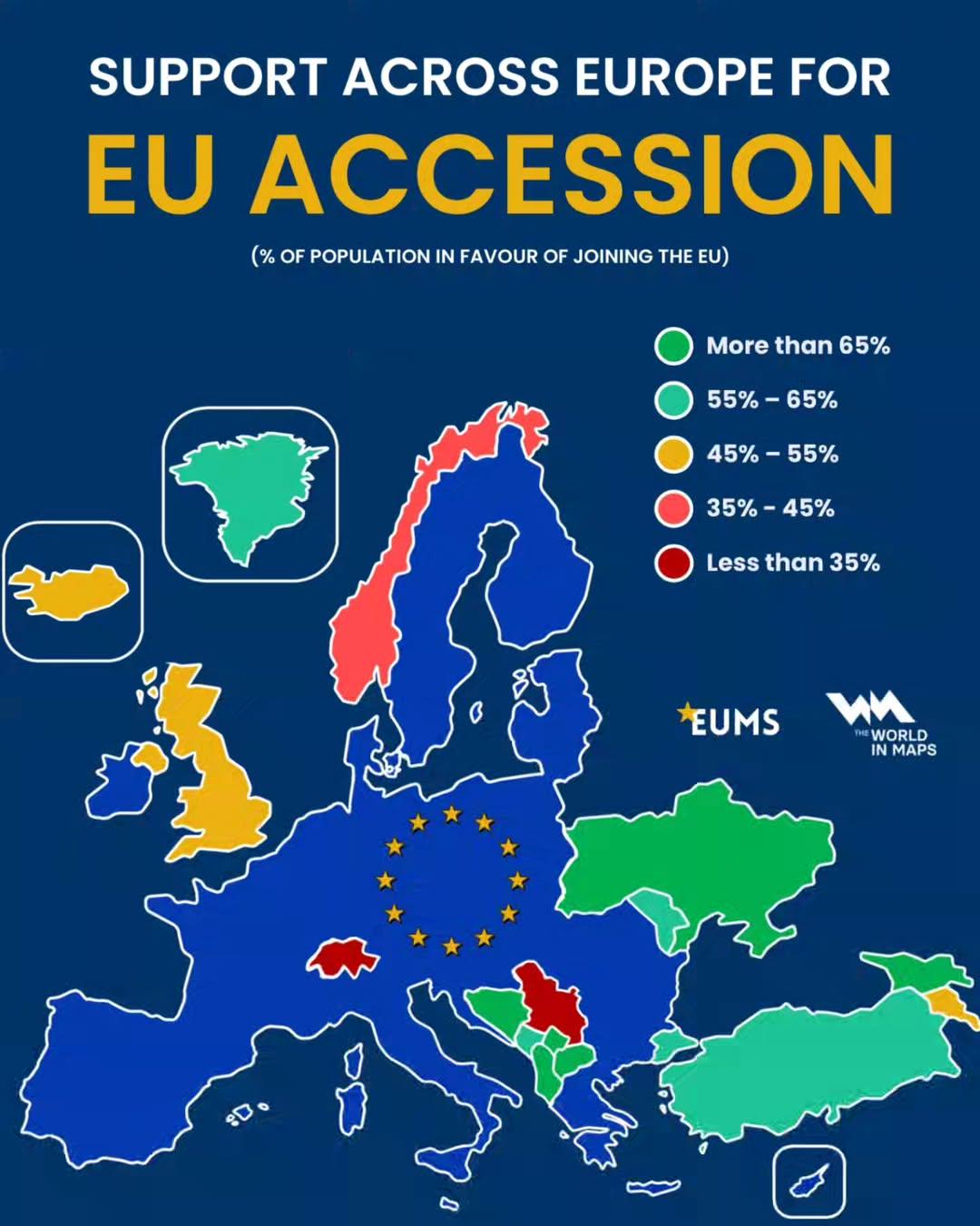EU Membership Aspirations Map


Alex Cartwright
Senior Cartographer & GIS Specialist
Alex Cartwright is a renowned cartographer and geographic information systems specialist with over 15 years of experience in spatial analysis and data...
Geographic Analysis
What This Map Shows
The "Who Wants to Join the EU?" map visualizes the current status of countries that aspire to join the European Union. This fascinating map categorizes nations based on their EU membership ambitions, highlighting those that are candidates, potential candidates, and countries that have expressed interest in joining in the future. It provides a clear snapshot of the political landscape in Europe regarding EU expansion and the varying levels of commitment among countries to integrate into this influential economic and political bloc.
Deep Dive into EU Membership Aspirations
The European Union (EU) is more than just an economic union; it represents a political and social framework that promotes stability, democracy, and prosperity among its member states. However, the journey to EU membership is not straightforward and involves meeting stringent criteria set out in the Copenhagen criteria, which include stable institutions guaranteeing democracy, the rule of law, human rights, respect for and protection of minorities, a functioning market economy, and the acceptance of the obligations of membership.
Currently, several countries are recognized as candidate countries, including Serbia, Montenegro, North Macedonia, and Albania. Each of these nations is at different stages of the accession process, navigating complex negotiations on various issues, from political reforms to economic adjustments. For instance, Serbia has made significant progress, yet its relationship with Kosovo remains a contentious issue that could hinder its path to membership.
Interestingly, Turkey has been a candidate for EU membership since 1987, but its journey has been fraught with challenges, particularly due to concerns over human rights and democratic governance. This situation raises the question: why do some countries appear to be on a more favorable trajectory towards EU membership while others struggle? Factors such as geopolitical relationships, economic stability, and public opinion play critical roles in this process.
Additionally, several nations are recognized as potential candidates. Countries like Bosnia and Herzegovina and Kosovo have expressed strong interests in EU integration, yet they face significant hurdles, including political fragmentation and economic instability. It’s worth noting that public perception of the EU varies greatly within these countries. For example, while some citizens may see membership as a pathway to greater prosperity, others may harbor skepticism stemming from historical grievances or current political issues.
Regional Analysis
Examining the map, we can see distinct regional trends. In the Western Balkans, the aspirations for EU membership are particularly pronounced. Countries like Montenegro and Serbia are actively engaging in reforms to align with EU norms. However, the pace of these reforms often reflects internal political dynamics. Montenegro, for example, has faced political instability that has slowed down its accession efforts.
In contrast, Eastern European countries like Ukraine and Moldova have recently intensified their EU aspirations, particularly in light of geopolitical tensions with Russia. The war in Ukraine has galvanized public support for EU integration, leading to a push for rapid reforms that align with EU standards. These countries are not just looking at economic benefits; they are seeking a stronger security framework through EU membership.
Interestingly, the Nordic countries, while not currently seeking EU membership, provide a unique comparison. They exhibit high levels of integration with the EU through various agreements and alignments. This relationship showcases that while formal membership is one path, there are alternative ways to engage with the EU.
Significance and Impact
The topic of EU membership aspirations is significant not only for the countries involved but also for the EU itself and its global standing. As the EU contemplates expansion, it must consider the implications of integrating new members, from economic impacts to geopolitical stability in the region. The ongoing enlargement process could reshape the balance of power within Europe and influence the EU's policies on issues like migration, trade, and security.
Current trends suggest that EU enlargement is likely to remain a contentious issue in the upcoming years. With rising nationalism in some member states and varying levels of enthusiasm for further enlargement, the EU faces a complex balancing act. The future of these aspiring nations hinges not only on their internal reforms but also on the EU's capacity to adapt to the changing political landscape.
In conclusion, the "Who Wants to Join the EU?" map serves as a crucial resource for understanding the dynamics of European integration. The aspirations of these countries reflect wider regional trends, historical contexts, and the ongoing quest for stability and prosperity in a rapidly changing world. As we look to the future, it will be fascinating to observe how these ambitions evolve and what they mean for the future of the European Union itself.
Visualization Details
- Published
- September 12, 2025
- Views
- 92
Comments
Loading comments...